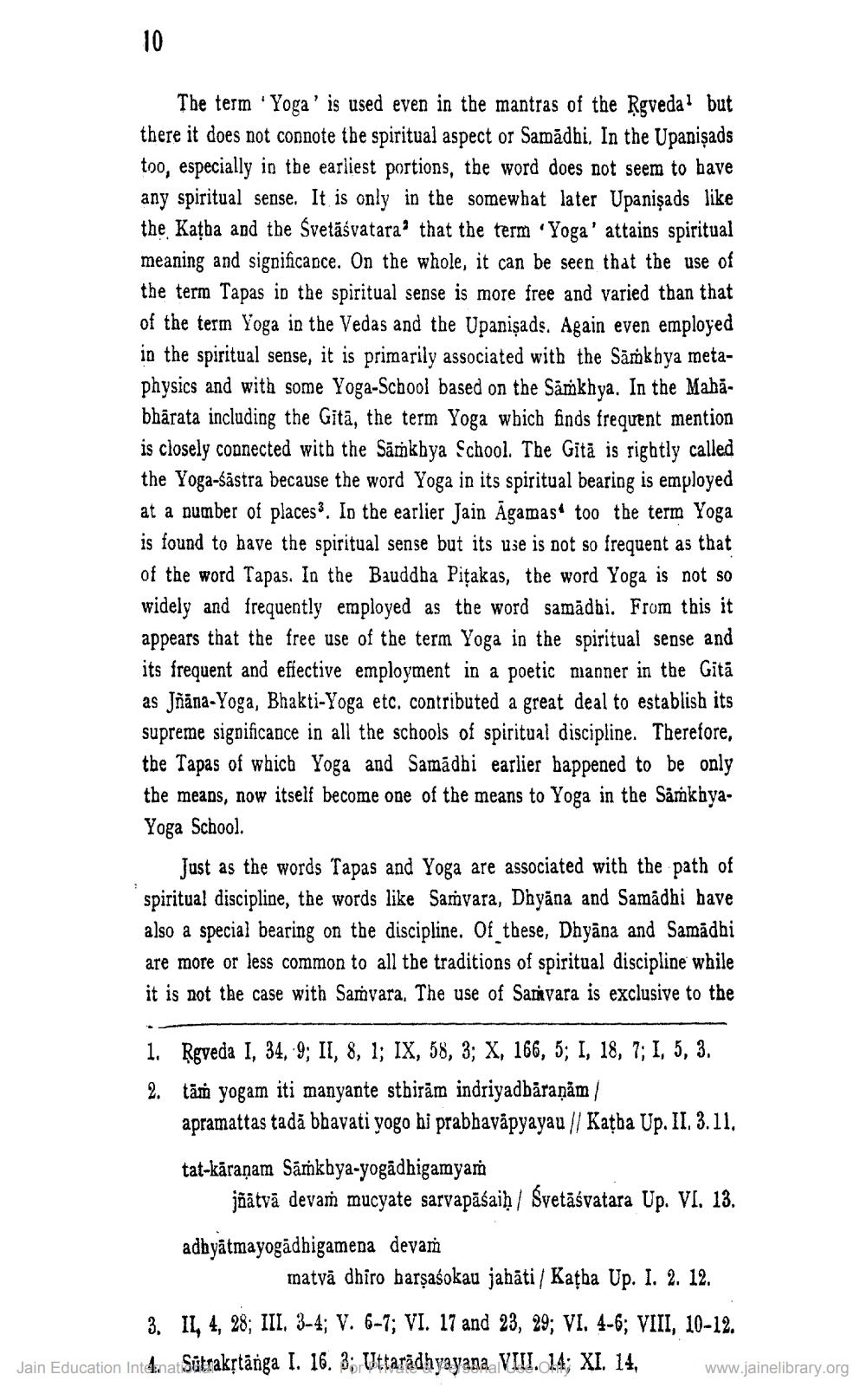________________
10
The term 'Yoga' is used even in the mantras of the Ṛgveda1 but there it does not connote the spiritual aspect or Samadhi. In the Upanisads too, especially in the earliest portions, the word does not seem to have any spiritual sense. It is only in the somewhat later Upanisads like the Katha and the Svetasvatara that the term 'Yoga' attains spiritual meaning and significance. On the whole, it can be seen that the use of the term Tapas in the spiritual sense is more free and varied than that of the term Yoga in the Vedas and the Upanisads. Again even employed in the spiritual sense, it is primarily associated with the Samkhya metaphysics and with some Yoga-School based on the Samkhya. In the Mahābharata including the Gita, the term Yoga which finds frequent mention is closely connected with the Samkhya School. The Gita is rightly called the Yoga-sastra because the word Yoga in its spiritual bearing is employed at a number of places3. In the earlier Jain Agamas too the term Yoga is found to have the spiritual sense but its use is not so frequent as that of the word Tapas. In the Bauddha Pitakas, the word Yoga is not so widely and frequently employed as the word samadhi. From this it appears that the free use of the term Yoga in the spiritual sense and its frequent and effective employment in a poetic manner in the Gita as Jñana-Yoga, Bhakti-Yoga etc. contributed a great deal to establish its supreme significance in all the schools of spiritual discipline. Therefore, the Tapas of which Yoga and Samadhi earlier happened to be only the means, now itself become one of the means to Yoga in the SamkhyaYoga School.
Just as the words Tapas and Yoga are associated with the path of spiritual discipline, the words like Samvara, Dhyana and Samadhi have also a special bearing on the discipline. Of these, Dhyana and Samadhi are more or less common to all the traditions of spiritual discipline while it is not the case with Samvara. The use of Samvara is exclusive to the
1. Rgveda I, 34, 9; II, 8, 1; IX, 58, 3; X, 166, 5; I, 18, 7; I, 5, 3.
2. tām yogam iti manyante sthiram indriyadhāraṇām /
apramattas tada bhavati yogo hi prabhavapyayau // Katha Up. II. 3.11.
tat-kāraṇam Samkhya-yogadhigamyam
jñātvā devam mucyate sarvapāśaiḥ/ Svetasvatara Up. VI. 13.
adhyatmayogädhigamena devam
matva dhiro barṣaśokau jahāti / Kaṭha Up. I. 2. 12.
3. II, 4, 28; III. 3-4; V. 6-7; VI. 17 and 23, 29; VI. 4-6; VIII, 10-12. Jain Education Intonat Sutrakṛtānga I. 16. 3; Uttaradhyayana VIII. 14; XI. 14,
www.jainelibrary.org




